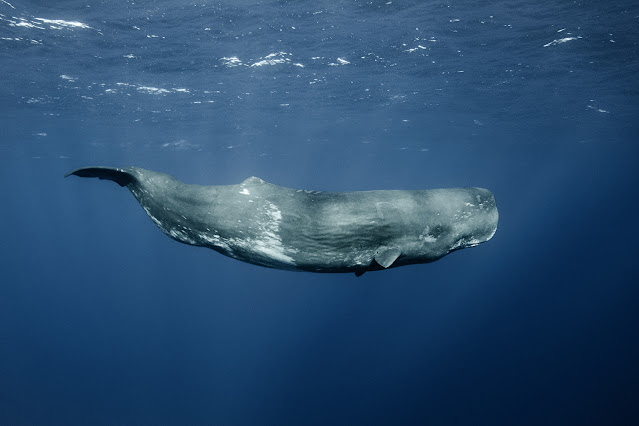Sperm whales are the largest toothed whales, known for their massive heads and impressive diving abilities. They have a unique spermaceti organ in their heads, which contains a waxy substance. Scientists believe this organ helps control buoyancy and may play a role in echolocation.
Sperm whales are deep-sea divers, capable of reaching depths of over 3,000 feet (900 meters) and staying submerged for up to 90 minutes. They primarily feed on giant squid and deep-sea fish. Sperm whale clicks, used for echolocation and communication, are among the loudest sounds produced by any animal, and they can travel vast distances underwater.
Sperm whales face various threats, including collisions with large vessels, entanglement in fishing gear, and noise pollution from human activities like shipping and oil exploration. Climate change impacts on their prey, such as squid and fish, also pose challenges. Conservation efforts focus on addressing these threats and promoting sustainable practices to ensure the long-term survival of sperm whale populations.
Conservation Efforts:
Conservation initiatives for sperm whales include establishing marine protected areas, implementing regulations to reduce ship strikes and fishing gear entanglements, and promoting sustainable fishing practices. Research on their behavior, migration patterns, and population dynamics contributes to informed conservation strategies. Public awareness campaigns also play a crucial role in fostering understanding and support for the protection of these majestic marine mammals.
Additionally, international collaboration and agreements aim to address the transboundary nature of sperm whale conservation. Scientific research on the impacts of climate change on their habitats informs broader strategies for marine ecosystem preservation. Ongoing efforts focus on balancing human activities with the needs of these whales to ensure a healthy and sustainable coexistence in our oceans.


Comments
Post a Comment